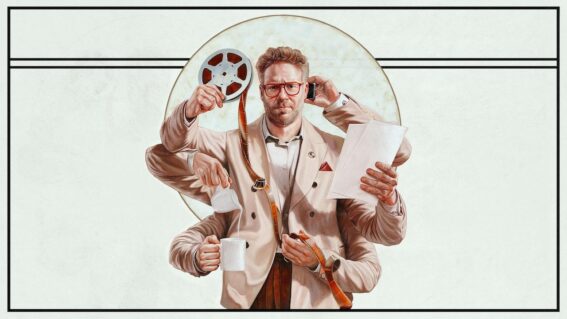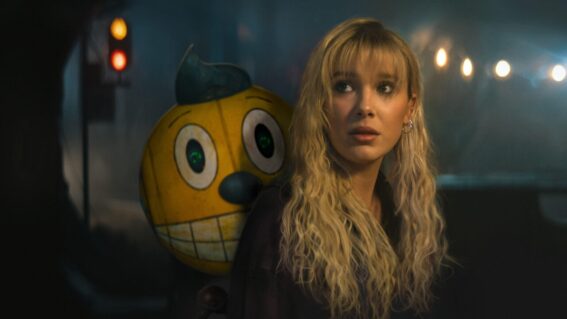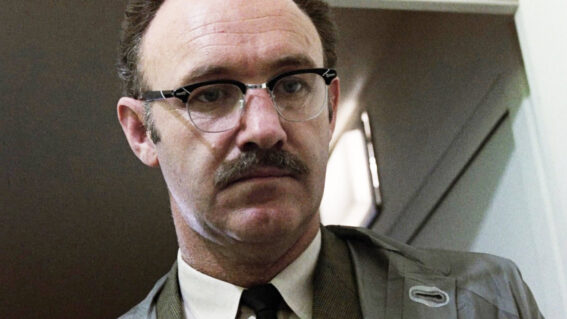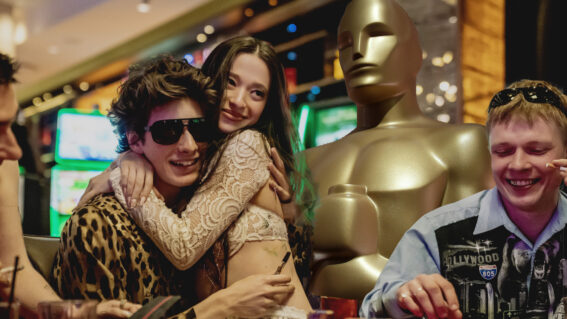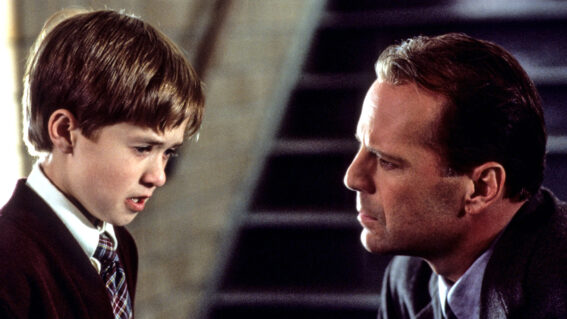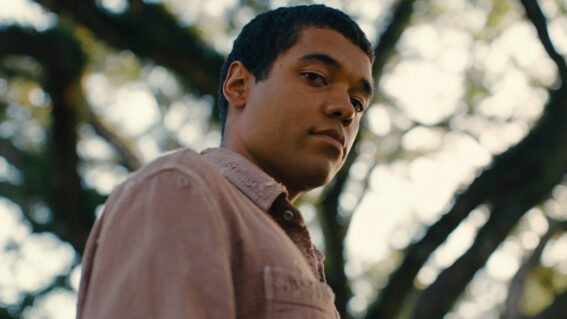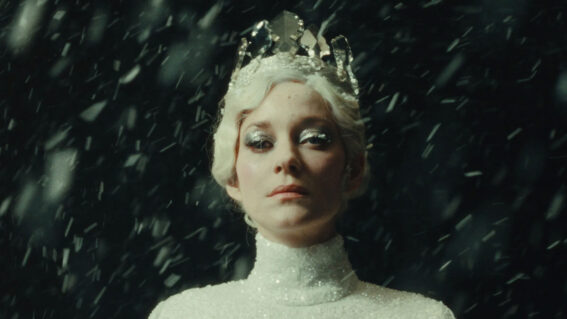Seen That? Watch This: The Sandman’s duel with the devil + other great depictions of hell
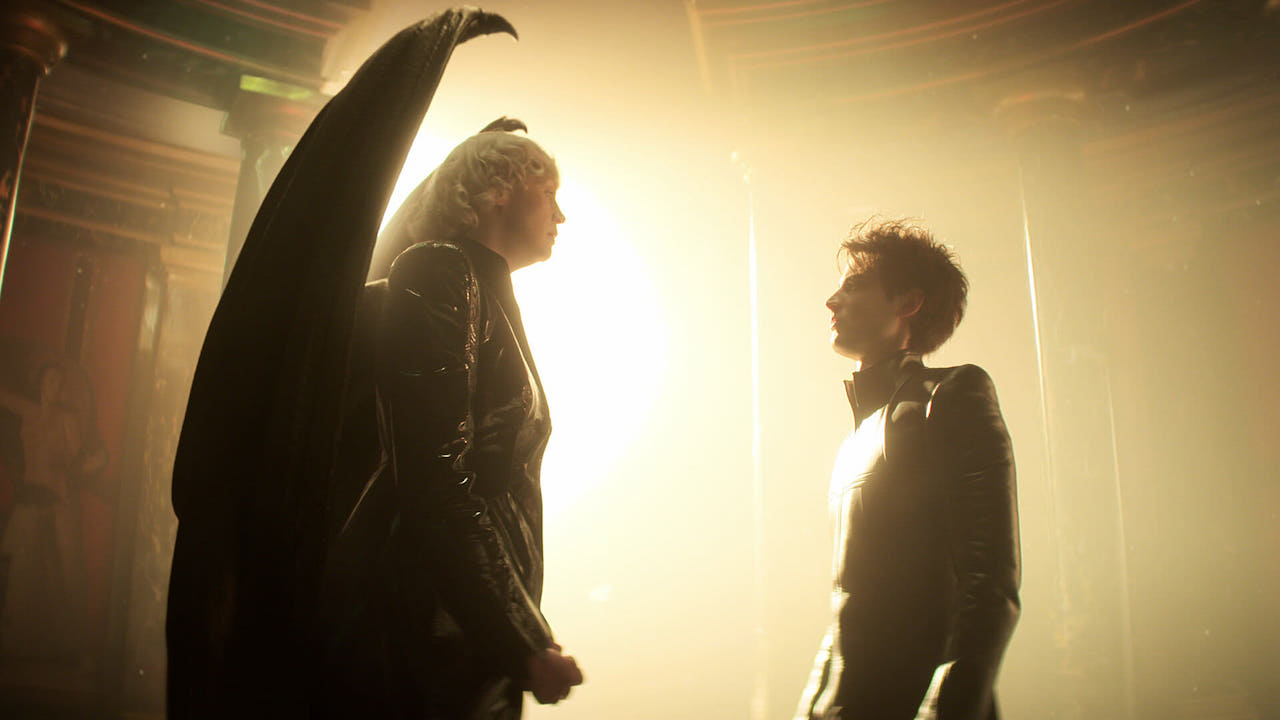
Seen That? Watch This is a weekly column from critic Luke Buckmaster, taking a new release and matching it to comparable works. This week he goes to hell, discussing the duel with the devil in The Sandman before recommending other great depictions of the Bad Place.
During one of The Sandman’s more cheerful moments, the protagonist ventures to hell and duels with the devil while surrounded by tortured souls doing what they do best: wailing and moaning about eternal damnation. Throughout popular culture, the stakes involved with competing against Satan—here, named “Lucifer Morningstar” and taking the gender-flipped form of actor Gwendoline Christie—never involve something fun, like a free night on the booze. Always the “your soul for eternity” thing.
In The Sandman it’s no different, with Dream (Tom Sturridge) visiting the devil’s domain to retrieve his “helm” (another word for “helmet”), which has been stolen by a mould-coloured demon. When Dream arrives accompanied by a talking crow named Matthew (Patton Oswalt), he notes that hell “has many names”—such as Avernus, Tartarus and Hades. As the pair look out onto a vast mist-covered landscape, beneath a dark cinematic skyline, Matthew asks which way they should go, and is given an answer you don’t hear very often on a GPS: “I suggest we follow the damned.”
This depiction of hell inverts the common, stereotypical view that Satan’s home turf is excruciatingly hot; here the terrain is gray, lifeless and cold. There are fires dotted across the landscape, and some illuminate Lucifer’s stylishly minimal adobe (corporate hell chic?).
The dark ruler and Dream engage in a wee bit of small talk (“you look well Dream, are you well?”) before engaging in a game of wits: a contest in which they take turns naming things that overpower the previous thing the other one just named. For example: a hunter overpowers a dire wolf; a bird of prey overpowers a snake; anti-life overpowers the universe.
It’s a little silly, although this episode unquestionably contains a memorable depiction of the afterlife. Where else might you go, for other depictions? To hell, of course. Read on.
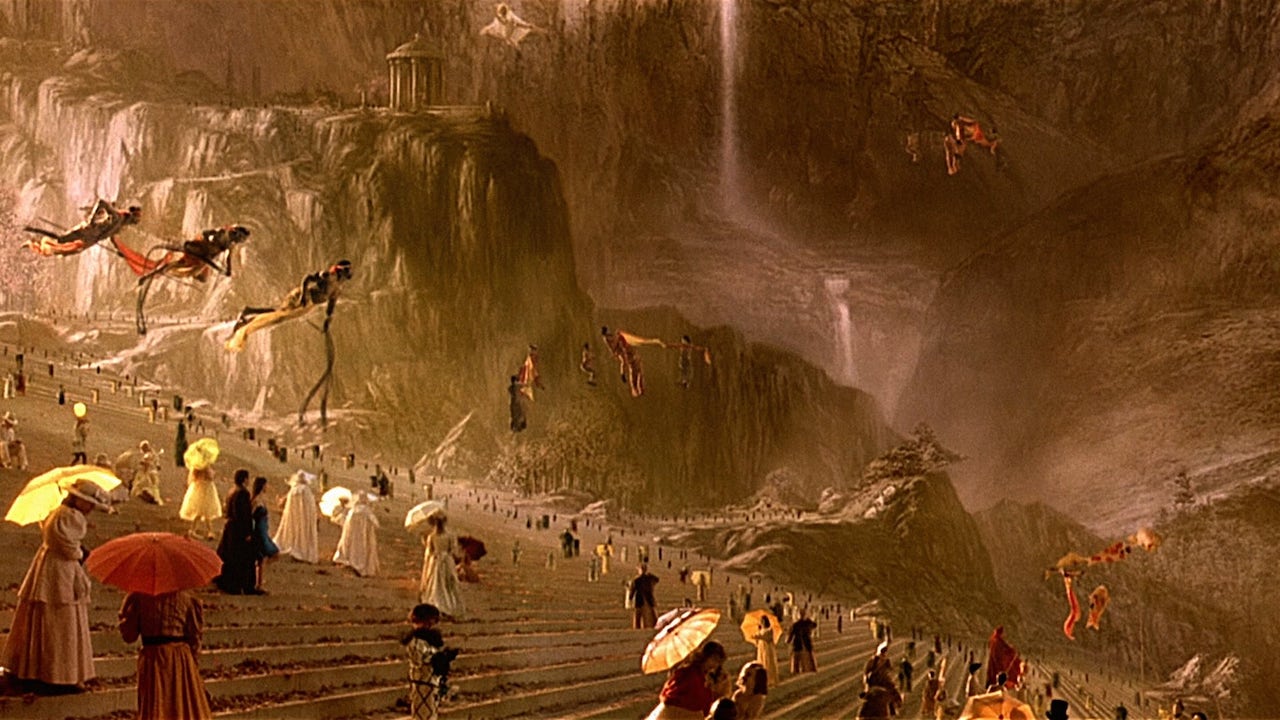
What Dreams May Come (1998)
After the aforementioned battle in The Sandman, the devil asks Dream: “What power have dreams in hell?” Her point is that hell isn’t exactly a place that screams “bright futures for all”—however the idea of dreams, and hope, existing way downstairs is a serious one, memorably explored in Vincent Ward’s hugely underrated What Dreams May Come. The protagonist Chris (Robin Williams) is frolicking about in heaven when he discovers his wife and soulmate Annie (Annabella Sciorra) has died by suicide. Suicides, he learns, are sent to hell, so he sets out on a quest to save her.
Visualizing heaven and hell is no easy task, but Ward brings a ravishing style, expanding the otherworldly aesthetic of his extraordinary-looking previous films including The Navigator: A Medieval Odyssey. Heaven is lovely, taking on the aesthetic of a beautiful painting created by Annie. Hell, not so much. To get there Chris saints over a sea of lost souls, hissing and wailing and flailing about, before stepping onto a landscape where faces of the damned are embedded into the ground. The heart of hell, he discovers, is intensely personal: a crumbling duplicate of he and Annie’s real-world home, now a haunted house on the edge of existence.
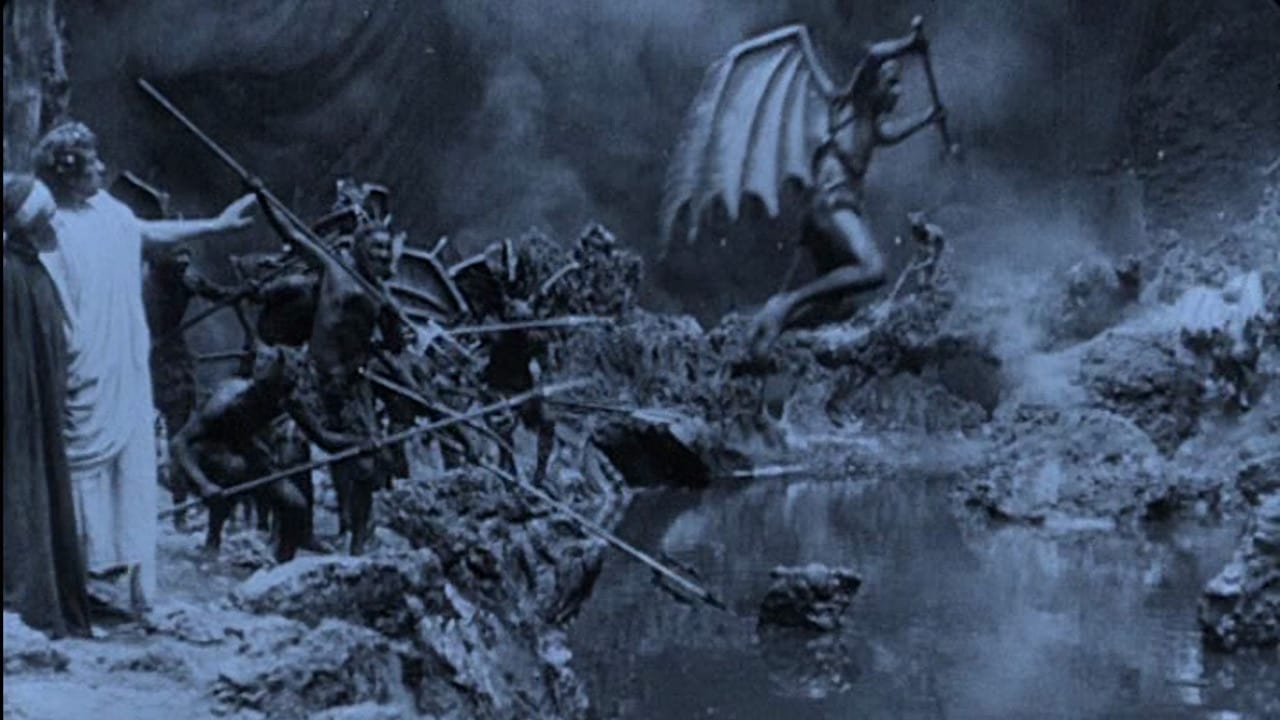
Dante’s Inferno (1911)
Visualizing hell as a landscape littered with human bodies is an oldie but a goodie—depicted in countless paintings and dating back in the cinema to at least 1911, when Italy’s first feature film arrived. In this version of the nether world there are many birthday suits; everybody is very nakie. Dante’s Inferno opens with a wobbling, gyrating frame (due to the rudimentary technology of the time) depicting the poet Dante (Salvatore Papa) lost in the woods. Deciding he’s up for a pleasant afternoon stroll, Dante embarks on a journey through the circles of hell, accompanied by the toga-wearing Virgil (Arturo Pirovano).
In one arresting image, Dante and Virgil walk across a landscape littered with in-the-buff bods, while intense rain-like light effects busy the sky above them. Like in What Dreams May Come, there’s a commentary on people who died by suicide, an intertitle stating that these poor souls have “changed into shrunken and gnarled trees”. Then we see these extremely weird, woebegone folk for ourselves, who are wrapped up in leafless trees and have bird-like feet and large wings. Hell can be pretty rando.
Constantine (2005)
Director Francis Lawrence’s adaptation of the Hellblazer comic book stars Keanu Reeves as an exorcist who wearily (and rather woodenly) delivers lines such as “god’s a kid with an ant farm”. The characters are bland and the pacing so-so, but the film’s depictions of hell—which Constantine can visit by taking a bath (best not to ask too many questions)—are impressive. He and a detective (Rachel Weisz) who is investigating the supposed suicide (a theme once again) of her sister arrive there about 45 minutes in. This depiction of Lucifer’s home turf resembles a decimated city, coloured in apocalyptic orange, ravaged by howling winds.
The core idea is that this version of the great beyond exists perpetually in the moment right after a nuclear bomb has detonated, but before it’s blown everything away: a constant, hellish heatwave. The visual effects team examined footage of nuclear blasts and paintings of decaying corpses (a fun day at work!) to inform their vision. Sadly, the scenes in hell are painfully brief. This location would have made a great set piece for the finale, but instead it takes place on crummy old earth.
Bliss (1985)
Ray Lawrence’s terrifically strange Australian film—adapting Peter Carey’s book of the same name—asks what’s worse: knowing you’re in hell, or wondering whether you’re there? It begins with the pitiable mild-mannered adman Harry Joy (Barry Otto) dying from a heart attack. He finds a way back to his body, but is he dead or alive? The world is now a bizarro place where terrible things with deeply personal connotations happen all the time. His daughter performs oral sex on his son, for instance, and his wife and business partner have a very public, torrid affair—going at it in plain view in a busy restaurant.
Occurrences such as the latter suggest this reality isn’t reality at all—but the film stops short of stating that Harry is in the afterlife. Barry Otto’s frazzled, bleary-eyed performance brilliantly depicts a character who wants nothing more than to be released from inside himself but is trapped forevermore, burdened and oppressed in a Twilight Zone-esque nightmare. In many respects this is cinema’s finest, most inventive rendering of hell—made more impressive by the knowledge that it might not be hell at all.











